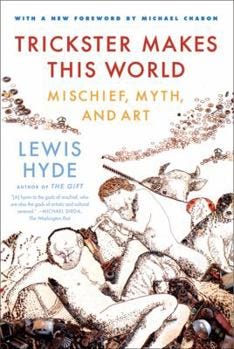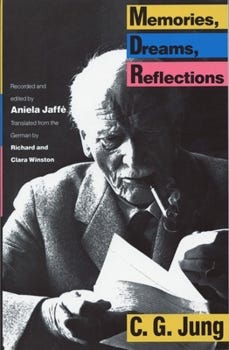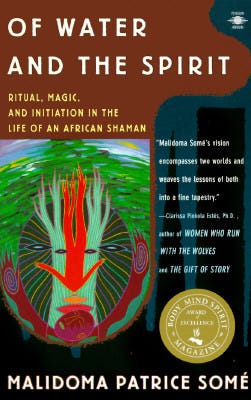Hello once more dear readers. I’m back with the second installment of this year’s Winter Word Hoard, a list of books that have inspired me and shaped my thinking in profound ways.
Many of these texts helped form the foundation for my own book, Psychedelics and the Soul: A Mythic Guide to Psychedelic Healing, Depth Psychology, and Cultural Repair (which is now available).
Some of these books have been in my life for over a decade, some only in the last year or two. But all of them are definitely worth your time.
As I said in Part I, you can use this list as a resource for your own study, or as a resource for gifts for any special weirdos in your life who are into these sorts of wonderings.
I hope the approach of this winter solstice finds each of you with stillness, clarity, and good company around a fire. See you on the other side.
Animism: Respect for the Living World, by Graham Harvey
There are two ways that those of us in the modern West might approach reintroducing ourselves to animistic perspectives: The first way (and best way, if you ask me,) is experientially - through lived experiences with the living world, and through time spent humbly learning from Indigenous traditions that have miraculously resisted the many forces whose sole desire is for them to completely exile this way of being from their identity.
The second way is through academic study, which for many people is likely to be a more accessible route of approaching animism. Though by no means a way to replace the former, I see the academic study of animism like a crutch or a cast for a broken leg, something that can assist our limping cultural psyche to continue to heal as the deeper medicine of direct experience slowly seeps into the painful fracture beneath.
Harvey’s book is a classic at this point in the academic study of animism. A respected voice in academic circles, Harvey handles his subject without minimizing, demeaning, or grossly missing the mark - common pitfalls that most modern European scholars face when discussing a worldview that in every regard swims against the stream of dominant perceptions.
Though at some points dry and overly academic, this book draws from a wide range of cultural expressions of animism, and clearly describes who animists are, what they believe, how they relate with the world, and why they do what they do.
Recalling the legacy of Descartes, Harvey writes: “At the heart of the matter is the opposition between ‘persons’ and ‘objects.’ Persons are those with whom other persons interact with varying degrees of reciprocity. Persons may be spoken with. Objects, by contrast, are usually spoken about. Persons are volitional, relational, cultural, and social beings. . . . People become animists by learning how to recognize persons and, far more important, how to engage with them”
According to Harvey, animists are people who recognize that the world is full of persons, “not all of whom are human but all of whom are worthy of respect.” I challenge anyone to find a more concise definition of the term.
Trickster Makes this World, by Lewis Hyde
I cannot say enough good things about this book. I read it during the early days of the COVID lockdown, strangely enjoying the enforced sabbatical that unfolded across the globe in the Spring of 2020. Fresh out of grad school, I took advantage of the weird, wide open days to read as much as possible.
Lewis Hyde, a former professor of creative writing at Harvard and a recipient of the MacCarthur “genius grant,” is one of the most intriguing thinkers I’ve encountered, capable of deftly weaving together the study of mythology, art, culture, and philosophy. While perhaps better known for writing The Gift, his landmark book on the importance of giving, Trickster Makes this World is a mythic exploration the likes I have never seen before or since.
Dedicating the entire text to exploring the intersections of trickster mythologies, art, and the creation of culture, Hyde artfully weaves in stories from Native America, Africaa, the Norse, and of course, ancient Greece. His exploration of Coyote, Rave, Eshu, and Hermes is by far the most useful wonderings on the Trickster archetype that I have ever encountered.
Memories, Dreams, and Reflections, by C.G. Jung & Anelia Jaffe
I get asked this question all the time: “I want to learn more about depth psychology but I don’t know where to start. What would you suggest I read?” I’s say that there is no better place to start than with the man himself.
Memories, Dreams and Reflections is essentially Carl Jung’s autobiography, and traces his life and work all the way back to his early childhood. It is something like a creation myth from the mythopoetic master, charting the unfolding of his inner world and outer life in a way that is deeply personal, instructional, insightful, and profound.
Granted, this is a surface retelling, perhaps more aligned with the ego than the soul, which is why Jung almost scuttled the entire project for this reason. But he stuck with it, and we are all the better for it.
It is not the night sea journey into the depths of the unconscious that the posthumously published Red Book or Black Books describe, which Jung was much more careful to share. But Memories, Dreams, Reflections is a beautiful recounting of Jung’s life, in extremely readable wording.
Of Water and the Spirit, by Malidoma Somé
I count myself extremely blessed to have witnessed Malidoma speak once to a live audience in Portland. He held the entire room in complete rapture for close to two hours, playing with humor, spontaneity, and transmission of what I can only call truth.
While I didn’t draw on this book in particular in the writing of my own, it is the book of Malidoma’s that I would recommend the most. It details his life story, growing up in the Dagara tribe of Burkina Faso, his struggle with his Jesuit captors, and his miraculous initiation back into his traditional culture.
This entire book is one incredible story that defies logic, and opens us up to understanding a different way of being that has become all too rare today. Malidoma speaks of magic, initiation, ancestors, spirits, and deep cultural knowledge that his people have preserved since time immemorial.
Most books like this are manufactured hogwash which might contain several kernels of truth. Casteneda comes to mind. But this book is different, written by a person who inspired and helped thousands of people, and impacted the mythopoetic movement in a way that we are still trying to comprehend.
God is Red, by Vine Deloria Jr.
“The theory of relativity, in this sense, hardly means that all things are relative. It rather means that all things are related,” wrote Deloria.
I cannot say enough good things about Vine Deloria Jr. The man was a prolific Lakota activist, scholar, lawyer, and writer whose work spans decades and disciplines. He was also a Jungian, and wrote another amazing book, C.G. Jung and the Sioux Traditions, which explores the convergence of Jung’s work and Indigenous worldviews. It is also 100% worth your time.
God is Red reads like an incendiary political manifesto combined with a psycho-spiritual treasure map for those of us living on the North American continent. It is essential reading for anyone who claims an interest in understanding Indigenous perspectives on this land.
I was utterly unprepared for the vastness of Deloria’s exploration in this book. Instead of trying to sum it up in my own words, I’ll offer some of Deloria’s cutting prose itself:
“The lands of the planet call to mankind for redemption. But it is a redemption of sanity, not a supernatural reclamation projection at the end of history. The planet itself calls to the other living species for relief. Religion cannot be kept within the bounds of sermons and scriptures. It is a force in itself and it calls for the integration of lands and peoples in harmonious unity. The lands wait for those who can discern their rhythms. The peculiar genius of each continent, each river valley, the rugged mountains, the placid lakes, all call for relief from the constant burden of exploitation …
Who will find peace with the lands? The future of mankind lies waiting for those who will come to understand their lives and take up their responsibilities to all living things. Who will listen to the trees, the animals and birds, the voices of the places of the land? As the long-forgotten people of the respective continents rise and begin to reclaim their ancient heritage, they will discover the meaning of the lands of their ancestors. That is when the invaders of the North American continent will finally discover that for this land, God is Red.” (pp. 300-301).
And that, dear reader, is what we call a mic drop.
Registration for my new 6-week course, Psychedelics and the Soul: Level 1 - Mythopoetic Integration is now open!
You’re invited to join a vibrant community of psychedelic practitioners and inner explorers to learn about the world of symbolism, dreams, and altered states of consciousness.
In this 6-week course, I’ll walk you through the “Mythopoetic Integration Method,” a way of working with visionary and psychedelic experiences that draws upon the traditions of Jungian depth psychology, archetypal psychology, dreamwork, and animistic perspectives.
Course begins January 28th.
You’re invited to come to my monthly Mythopoetic Integration Circle, which is available for all paid subscribers. This monthly group call is an opportunity to see this method in action, and to engage in the type of collective, inner work that we’ll be doing on a more in-depth level in the course. It’s only $8 a month, plus you’ll get access to my full archive and audio essays.
Let me know in a comment if you have read some of these books and how they impacted you!
And as always, please like and share this post to your heart’s content. It means a lot.










